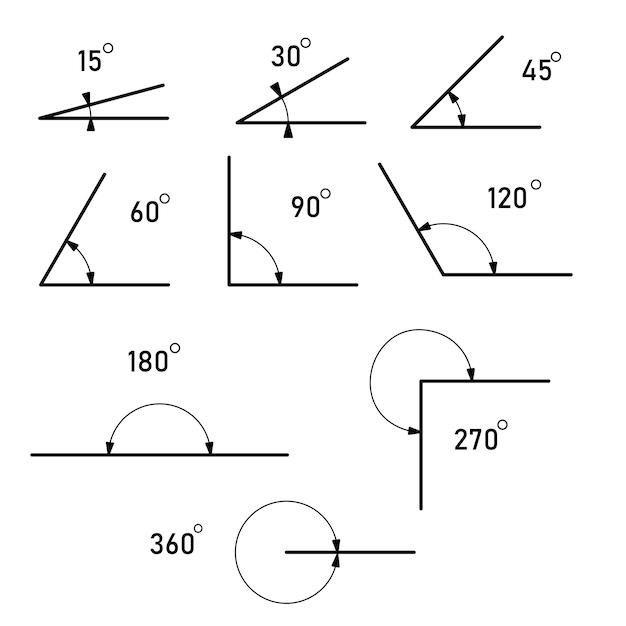This worksheet is designed to help students learn about the Law of Sines and Cosines. It includes practice problems, answers, and explanations of the concepts. This is a great resource for students who are studying trigonometry. The worksheet is available in PDF format, so it can be easily printed and used for classroom or personal study. The worksheet covers a variety of topics, including finding missing sides and angles of triangles, solving for the area of a triangle, and applying the Law of Sines and Cosines to real-world problems.
Introduction
The Law of Sines and Cosines are fundamental concepts in trigonometry, providing powerful tools for solving non-right triangles. These laws establish relationships between the sides and angles of any triangle, allowing us to determine unknown lengths and angles when given sufficient information. This worksheet offers a comprehensive exploration of these laws, guiding students through the key principles and their practical applications.
The Law of Sines is a powerful tool for solving triangles when we know two angles and one side (AAS), or two sides and an angle opposite one of them (SSA). It states that the ratio of the sine of an angle to the length of the side opposite that angle is constant for all angles in a triangle. This law allows us to find missing angles and sides in triangles where the Pythagorean theorem doesn’t apply.
The Law of Cosines, on the other hand, is essential when we know two sides and the included angle (SAS) or all three sides (SSS). It provides a relationship between the square of one side of a triangle and the squares of the other two sides, along with the cosine of the included angle. This law allows us to find missing sides and angles in triangles where we lack information about right angles.
This worksheet will delve into the intricacies of both the Law of Sines and the Law of Cosines, presenting a series of practice problems to solidify understanding. Students will learn how to apply these laws to solve various types of triangle problems and gain confidence in their ability to analyze and solve complex geometric situations.
The Law of Sines
The Law of Sines is a fundamental principle in trigonometry that establishes a relationship between the sides and angles of any triangle. It states that the ratio of the sine of an angle to the length of the side opposite that angle is constant for all angles in a triangle. This law is particularly useful for solving triangles when we know two angles and one side (AAS), or two sides and an angle opposite one of them (SSA).
The Law of Sines can be expressed mathematically as follows⁚
sin A / a = sin B / b = sin C / c
where⁚
- A, B, and C represent the angles of the triangle.
- a, b, and c represent the sides opposite angles A, B, and C, respectively.
To apply the Law of Sines, we can use any two of the three ratios. For instance, if we know angle A, angle B, and side a, we can use the first two ratios to solve for side b. Similarly, if we know side a, side b, and angle A, we can use the first and third ratios to solve for angle C.
The Law of Sines is a powerful tool for solving a wide range of triangle problems, from determining distances between objects to analyzing the forces acting on structures. It is a cornerstone of trigonometry and finds extensive applications in various fields, including engineering, surveying, and astronomy.
The Law of Cosines
The Law of Cosines is another fundamental principle in trigonometry that provides a relationship between the sides and angles of any triangle. It is particularly useful for solving triangles when we know two sides and the included angle (SAS), or all three sides (SSS). The Law of Cosines extends the Pythagorean theorem to non-right triangles.
The Law of Cosines can be expressed mathematically as follows⁚
c2 = a2 + b2 ─ 2ab cos C
where⁚
- a, b, and c represent the sides of the triangle.
- C represents the angle opposite side c.
This formula states that the square of one side of a triangle is equal to the sum of the squares of the other two sides minus twice the product of those two sides and the cosine of the included angle. We can rearrange the formula to solve for any of the sides or angles.
The Law of Cosines is a powerful tool for solving a wide range of triangle problems, from determining the distance between two points on a map to analyzing the forces acting on a bridge. It is a fundamental concept in trigonometry and finds applications in various fields, including engineering, surveying, and navigation.
Applications of the Law of Sines and Cosines
The Law of Sines and the Law of Cosines are not just theoretical concepts; they have practical applications in various fields. These laws are crucial for solving problems related to triangles, which are ubiquitous in our surroundings, from architecture and engineering to navigation and astronomy.
In surveying, the Law of Sines and Cosines are used to determine distances and angles between points on the Earth’s surface. This knowledge is vital for creating accurate maps, designing infrastructure projects, and conducting land surveys. In navigation, these laws help determine a ship’s or aircraft’s position and course by calculating distances and angles relative to known landmarks.
Furthermore, these laws are essential in engineering, particularly in structural design. Engineers use them to calculate forces and stresses within structures, ensuring that bridges, buildings, and other constructions are stable and safe. In astronomy, these laws are used to calculate distances and relative positions of celestial objects, aiding in the understanding of the vast universe.
The applications of the Law of Sines and Cosines extend beyond these fields. They are also used in fields like physics, meteorology, and even computer graphics. These laws are fundamental tools that help us understand and solve problems in various aspects of our world.
Solving Triangles
Solving triangles using the Law of Sines and Cosines involves determining the unknown sides and angles of a triangle given some known information. This process is essential in various applications, from engineering and surveying to navigation and astronomy, where understanding the relationships between sides and angles is crucial.

The Law of Sines states that the ratio of the length of a side of a triangle to the sine of the angle opposite that side is constant for all three sides. This law is used to solve triangles when you know two angles and one side (AAS), or two sides and one non-included angle (SSA).
The Law of Cosines, on the other hand, relates the square of one side of a triangle to the squares of the other two sides and the cosine of the angle opposite the first side. This law is used to solve triangles when you know two sides and the included angle (SAS), or three sides (SSS).

Both laws are powerful tools for solving triangles, and understanding their applications is essential for anyone working with triangles in a practical setting. Worksheets like the Law of Sines and Cosines worksheet with answers PDF can help students master these concepts and apply them to various real-world problems.
Practice Problems
Practice problems are an integral part of learning and mastering any mathematical concept, and the Law of Sines and Cosines is no exception. These problems provide students with the opportunity to apply the theoretical knowledge they’ve gained to real-world scenarios and develop their problem-solving skills.
The Law of Sines and Cosines worksheet with answers PDF typically includes a variety of practice problems designed to test different aspects of these laws. These problems may involve finding missing sides or angles of triangles given different combinations of known values, such as two angles and one side, two sides and the included angle, or three sides.
Some problems might involve real-world applications, such as finding the height of a building or the distance between two points, allowing students to see the practical relevance of these laws. By working through these practice problems, students can solidify their understanding of the Law of Sines and Cosines and gain confidence in their ability to apply these laws to solve various problems.
Answer Key
The answer key is a crucial component of any worksheet, especially one that deals with complex mathematical concepts like the Law of Sines and Cosines. It provides students with the correct solutions to the practice problems, allowing them to check their work and identify any areas where they may have made mistakes.
The answer key serves as a valuable learning tool, enabling students to understand the process of solving the problems correctly and to see how the Law of Sines and Cosines are applied in practice. It also helps students to develop their problem-solving skills by providing them with a clear path to follow and by highlighting the steps involved in arriving at the correct answer.
In addition to providing the correct answers, a good answer key will also include explanations or step-by-step solutions for each problem. This allows students to see how the answers were derived and to understand the reasoning behind each step. By providing both the answers and explanations, the answer key becomes a powerful tool for learning and reinforcing the concepts taught in the worksheet.
The Law of Sines and Cosines worksheet with answers PDF is a valuable resource for students learning about trigonometry and its applications. The worksheet provides a comprehensive review of the concepts, including practice problems and detailed answers to help students understand the material thoroughly. By working through the problems and comparing their solutions to the answer key, students can gain confidence in their understanding of the Law of Sines and Cosines and develop their problem-solving skills.
The worksheet’s format, available in PDF format for easy printing and access, makes it a convenient tool for both classroom and individual study. The combination of practice problems and comprehensive answers allows students to learn at their own pace and identify areas where they may need further assistance. Whether used as part of a classroom curriculum or for independent study, the Law of Sines and Cosines worksheet with answers PDF is an effective resource to enhance understanding and mastery of these fundamental trigonometric concepts.
Resources
For students seeking further exploration and practice with the Law of Sines and Cosines, numerous online and offline resources are available. Websites like Khan Academy and MathPapa offer interactive lessons, practice problems, and video tutorials on these concepts. The textbook “Trigonometry” by James Stewart provides a comprehensive introduction to trigonometry, including detailed explanations of the Law of Sines and Cosines.
Additionally, libraries and online bookstores have a vast collection of trigonometry textbooks and workbooks for further study. For visual learners, searching for “Law of Sines and Cosines” on YouTube can lead to helpful video explanations and demonstrations. Websites like Kuta Software LLC offer printable worksheets with answers, similar to the one discussed in this article, providing additional practice opportunities. Finally, seeking guidance from teachers or tutors can provide personalized support and clarification of any challenging concepts encountered while studying the Law of Sines and Cosines.
